Greyhound Dog
- January 31, 2024
- 0 comment
The Greyhound dog is a breed known for its elegance, speed, and gentle temperament. With a history dating back thousands of years, Greyhounds were once the favored companions of Egyptian pharaohs and European nobility. Their physical characteristics are striking, featuring a sleek and slender build that allows them to reach remarkable speeds. Their coat comes in various colors and is easy to maintain. Despite their racing prowess, Greyhounds are incredibly gentle and make excellent family pets, known for their reserved nature around strangers and loyalty to their owners.

Caring for a Greyhound involves considering their exercise needs and providing them with a high-quality diet tailored to their age and activity level. For those looking to bring a Greyhound into their lives, adoption opportunities for retired racing Greyhounds are available, offering these remarkable dogs a loving retirement. Greyhounds are intelligent and trainable, making them not only incredible athletes but also loving and devoted companions for individuals and families alike.
| Aspect | Description |
|---|---|
| Breed Size | Large |
| Average Height | 27 to 30 inches (68 to 76 cm) at the shoulder |
| Average Weight | 60 to 70 pounds (27 to 32 kg) |
| Lifespan | 10 to 14 years |
| Coat | Short, fine, and smooth |
| Coat Colors | Various, including black, fawn, blue, and white |
| Temperament | Gentle, calm, and reserved |
| Activity Level | Moderate to low |
| Exercise Needs | Short bursts of intense activity |
| Trainability | Intelligent but may have an independent streak |
| Good with Children | Generally good with supervision |
| Good with Other Pets | Usually good with proper introduction |
| Health Considerations | Sensitive skin, bloat, and heart issues |
Graceful Speedsters of the Canine World
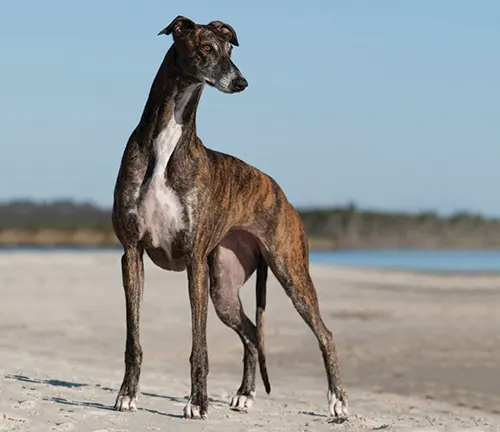
Greyhound dogs have been captivating humans for centuries with their remarkable speed, elegance, and gentle disposition. In this comprehensive article, we will delve into the world of Greyhounds, exploring their history, characteristics, care, and more. So, fasten your seatbelts (pun intended), as we embark on a journey to uncover the intriguing world of Greyhound dogs.
A Brief History
Greyhounds are an ancient breed, dating back over 4,000 years to the pharaohs of Egypt. These noble dogs were revered for their grace and speed and were often depicted in Egyptian art. They were brought to Europe by traders and quickly became the favorite hunting companions of European nobility.
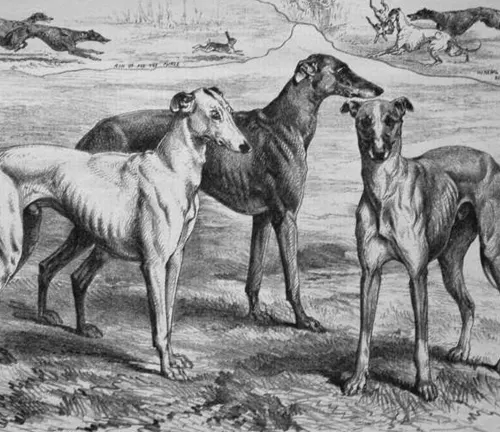
Physical Characteristics
The Greyhound, known for its unique physical characteristics, possesses a distinct appearance that sets it apart from other dog breeds. Here are the key physical characteristics of a Greyhound:
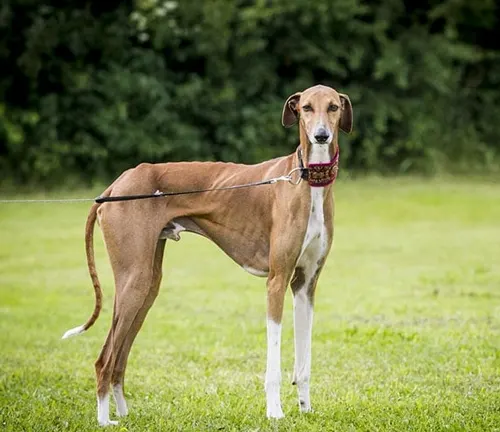
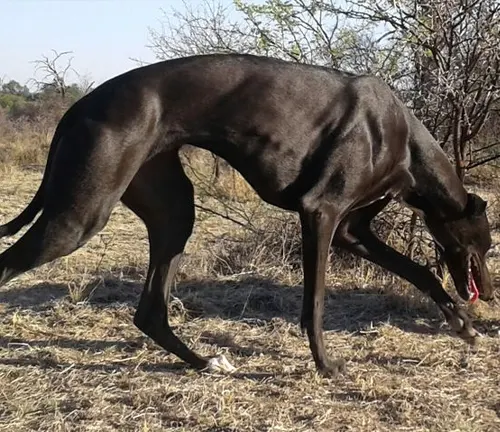
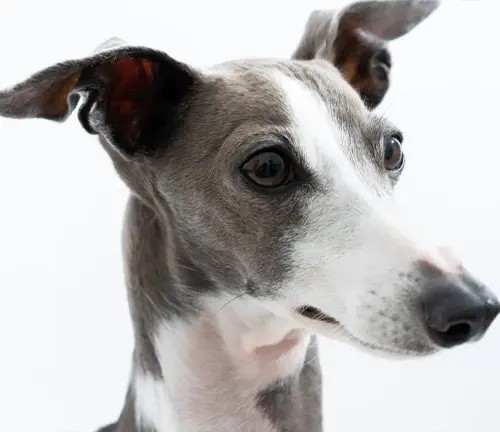
- Sleek and Slender Build: Greyhounds are known for their sleek and slender physique. They have long, elegant legs and a streamlined body that is perfectly designed for speed. This physique allows them to reach remarkable velocities, making them one of the fastest dog breeds in the world.
- Unique Coat: Greyhounds have a short, fine, and smooth coat. Their coat comes in various colors, including black, fawn, blue, and white. While their coat is easy to maintain and doesn’t require extensive grooming, it provides them with a glossy and attractive appearance.
- Tall Stature: Greyhounds are a large breed, standing typically between 27 to 30 inches (68 to 76 cm) at the shoulder. Their height contributes to their impressive stride and grace when in motion.
- Muscular Build: Underneath their sleek exterior, Greyhounds possess strong and well-defined muscles. These muscles play a crucial role in propelling them forward with great power during sprints.
- Deep Chest: Greyhounds have a deep chest, which allows for increased lung capacity. This feature helps them take in more oxygen during their high-speed chases, contributing to their exceptional endurance.
- Narrow Head: Their head is narrow and long, with a tapering snout. Their almond-shaped eyes are often dark and expressive, and their ears can be folded or semi-erect.
- Long Tail: Greyhounds have a long and slender tail that tapers towards the tip. This tail serves as a counterbalance while running and adds to their overall balance and agility.
- Graceful Gait: When they move, Greyhounds exhibit a graceful and almost floating gait. Their long legs allow them to cover a significant distance with each stride.
Temperament
Greyhounds are renowned for their unique temperament, which combines various qualities that make them truly special as canine companions. Here are the key aspects of the Greyhound’s temperament:
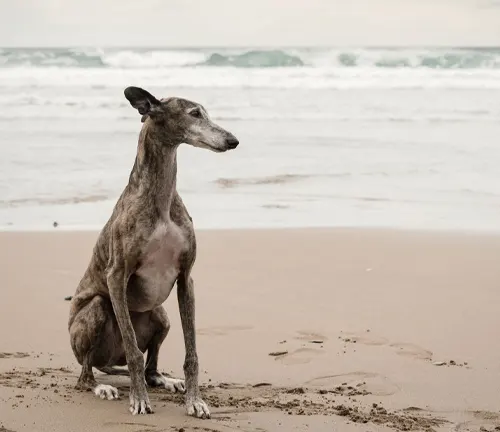
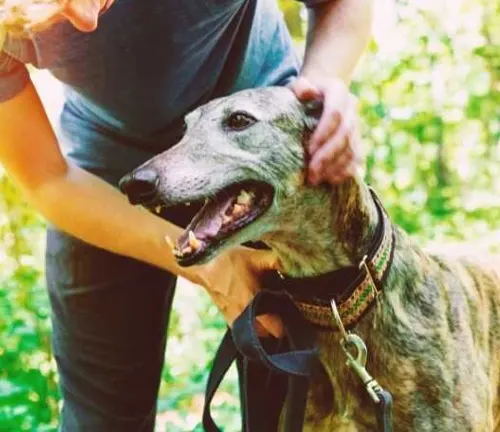

- Gentle Giants: Greyhounds are often referred to as “gentle giants” due to their gentle and calm demeanor. Despite their impressive racing abilities and athleticism, they have a peaceful and easygoing nature.
- Calm and Serene: Greyhounds are known for their tranquil and composed disposition. They are not typically hyperactive or excitable like some other breeds. Instead, they exude a sense of calm and serenity.
- Reserved Nature: Greyhounds tend to be reserved, especially around strangers. While they may be initially aloof, they quickly warm up to those they trust. This reserved nature is a part of their charm, as it reflects their thoughtful and discerning character.
- Loyal and Affectionate: Once a Greyhound forms a bond with their human family, they become exceptionally loyal and affectionate. They are known to be deeply attached to their owners and often enjoy cuddling and physical affection.
- Adaptable: Greyhounds are surprisingly adaptable dogs. Despite their reputation as racing champions, they adapt well to living in homes and can be content with a moderate amount of exercise. They are just as happy lounging on the couch as they are sprinting on the racetrack.
- Good with Children: Greyhounds are generally good with children, making them suitable family pets. Their gentle nature and patience make them well-suited for households with kids. However, supervision is crucial to ensure that interactions are safe and respectful on both sides.
- Reserved with Other Pets: Greyhounds usually get along well with other dogs and pets, provided they are properly introduced. Their reserved nature can translate into a calm and peaceful coexistence with other animals.
- Independent Thinkers: Greyhounds are intelligent dogs but can also have a bit of an independent streak. They may not always follow commands blindly and may prefer to think things through on their own terms.
Care and Maintenance
Caring for a Greyhound requires some specific considerations to ensure their well-being and happiness. Here are the key aspects of care and maintenance for Greyhounds:
Exercise Needs
While Greyhounds are known for their speed, they surprisingly do not require extensive exercise. Short bursts of intense activity, such as a sprint in a secure area, are usually sufficient to keep them healthy and happy. Regular walks and playtime are essential to maintain their muscle tone and mental stimulation.
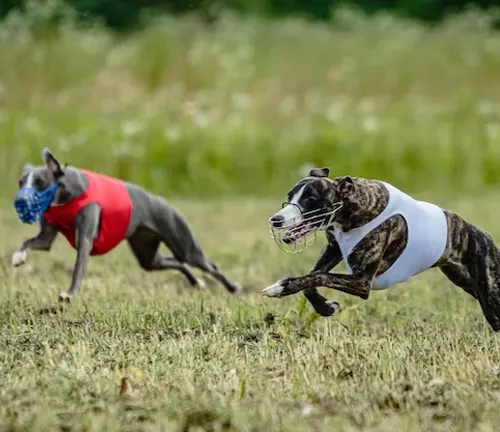
Dietary Requirements
Providing your Greyhound with a high-quality diet tailored to their age, activity level, and any specific health concerns is crucial. Consult with your veterinarian to determine the best food and feeding schedule for your dog. Be mindful not to overfeed, as Greyhounds can be prone to weight gain.

Grooming
Greyhounds have short, fine coats that are relatively low-maintenance. Regular brushing helps keep their coat shiny and healthy. Additionally, occasional baths may be needed to keep them clean and odor-free. Be sure to check their ears, teeth, and nails regularly and address any issues promptly.
Coat Protection
Greyhounds have thin skin, which can be sensitive to extreme weather conditions. In cold weather, consider using a dog coat or sweater to keep them warm during walks. In hot weather, protect them from the sun and ensure they have access to shade and water to prevent overheating.

Dental Care
Dental hygiene is important for all dogs, including Greyhounds. Brush your Greyhound’s teeth regularly to prevent dental issues and bad breath. Dental chews and toys can also help promote oral health.
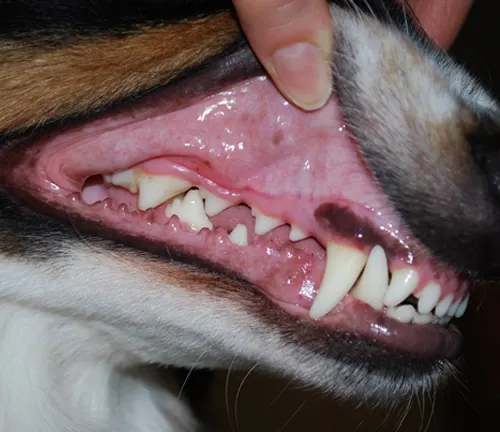
Regular Veterinary Care
Routine vet visits are essential to monitor your Greyhound’s overall health and address any potential health concerns promptly. Greyhounds can be prone to certain medical conditions, including bloat and heart issues, so early detection is crucial.
Social Interaction
Greyhounds are social animals and enjoy spending time with their human companions. Provide them with plenty of social interaction, love, and attention to prevent them from becoming anxious or bored.
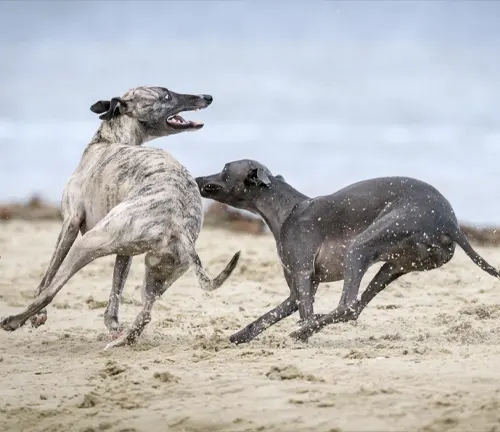
Training
Greyhounds are intelligent but can have an independent streak. Positive reinforcement training methods work best, and consistency is key. Training should focus on basic obedience and commands, as well as socialization with other dogs and people.
Safety Measures
Greyhounds have a strong prey drive, and some may be inclined to chase smaller animals. Ensure they are in a secure, fenced area when outdoors and always use a leash during walks to prevent any accidents.
Comfortable Living Environment
Make sure your home is safe and comfortable for your Greyhound. Provide a cozy bed or crate where they can rest, as they enjoy lounging around. Ensure they have access to fresh water at all times.
Different Species
Greyhound
(English Greyhound)
This is the breed commonly referred to as the “Greyhound.” English Greyhounds are known for their incredible speed and slender build. They are often used in racing and have a gentle temperament, making them great companions.
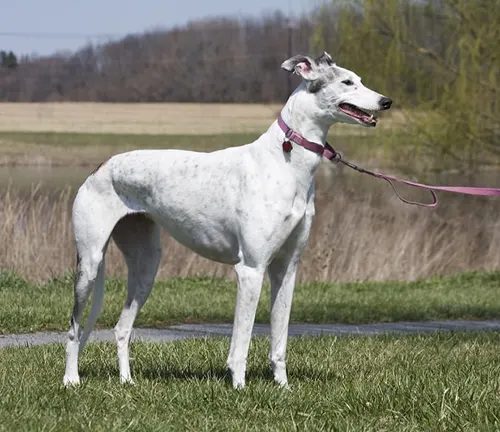
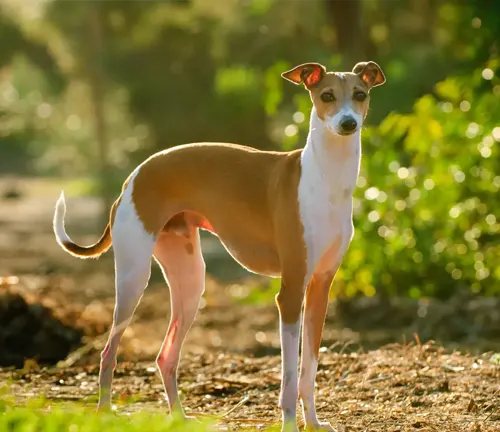
Italian Greyhound
The Italian Greyhound is a smaller breed compared to the English Greyhound. They share the same graceful appearance but are more compact. Italian Greyhounds are also known for their agility and affectionate nature.
Whippet
Whippets are often called “miniature Greyhounds” because they resemble smaller versions of the English Greyhound. They share the same sleek physique and are known for their speed in dog sports like lure coursing.
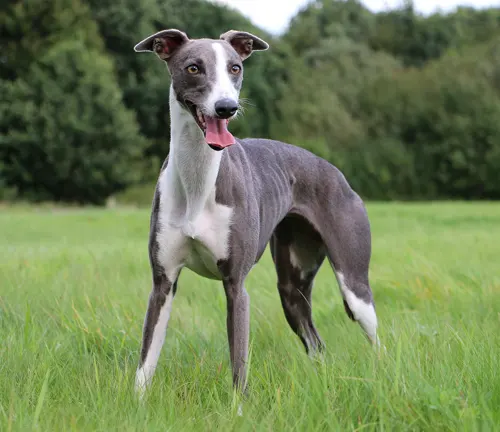

Spanish Greyhound
(Galgo Español)
The Spanish Greyhound, or Galgo Español, is a breed native to Spain. They are similar in appearance to English Greyhounds but have a different history and temperament. Galgos are often used for hunting and can be reserved but loyal companions.
Scottish Deerhound
While not a type of Greyhound, Scottish Deerhounds are a related breed. They are large, sight-hound dogs known for their hunting abilities and resemblance to Greyhounds. They have a gentle and friendly temperament.
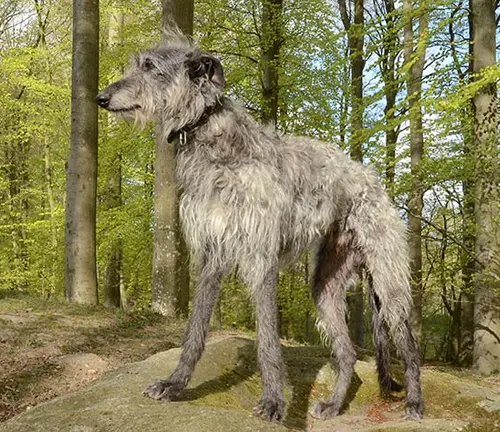
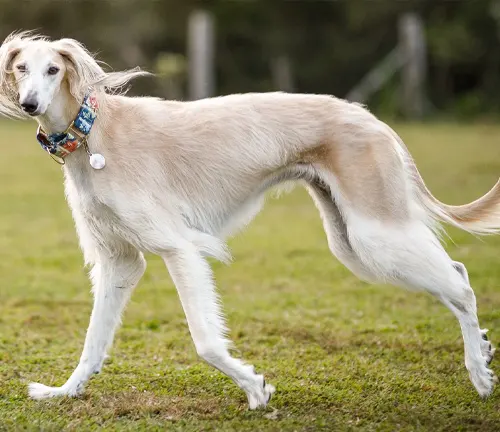
Saluki
The Saluki is another breed closely related to Greyhounds. They are an ancient breed known for their grace and speed, similar to Greyhounds. Salukis are often used for hunting in the Middle East and have a reserved but loyal nature.
Frequently Asked Question (FAQs)
- Are Greyhounds good with children?
Yes, Greyhounds are generally good with children due to their gentle and calm nature. However, supervision is essential to ensure safe interactions. - Do Greyhounds require a lot of exercise?
No, Greyhounds do not require extensive exercise. Short bursts of activity, such as sprints in a secure area, are usually sufficient to keep them healthy and happy. - Are Greyhounds hypoallergenic?
While no dog breed is entirely hypoallergenic, Greyhounds have short coats that may produce fewer allergens than longer-haired breeds. - What is the typical lifespan of a Greyhound?
Greyhounds typically have a relatively long lifespan, often reaching 10 to 14 years with proper care. - Can Greyhounds adapt to apartment living?
Yes, Greyhounds can adapt well to apartment living, provided they receive regular exercise and attention. They are not hyperactive dogs and enjoy lounging indoors. - Are Greyhounds easy to train?
Greyhounds are intelligent but can have an independent streak. Positive reinforcement training methods work best, and consistency is key to successful training. - Do Greyhounds get along with other pets?
Greyhounds usually get along well with other dogs and pets, provided they are properly introduced and socialized. - Are Greyhounds good watchdogs?
Greyhounds are generally not known for being good watchdogs. They are often reserved around strangers and may not be vocal when it comes to alerting to intruders. - Do Greyhounds require a lot of grooming?
No, Greyhounds have short, fine coats that are relatively low-maintenance. Regular brushing and occasional baths are usually sufficient to keep their coat in good condition. - What health issues are common in Greyhounds?
Greyhounds can be prone to certain health issues, including sensitive skin, bloat (gastric torsion), and heart problems. Regular veterinary check-ups are essential to monitor their health. - Can Greyhounds be adopted as adult dogs?
Yes, many retired racing Greyhounds are in need of loving homes. They adapt well to new environments and make wonderful companions even in adulthood. - Are Greyhounds good for first-time dog owners?
Greyhounds can be suitable for first-time dog owners, especially if they are prepared to meet the breed’s specific needs and temperament. Seeking guidance from experienced Greyhound owners or rescue organizations can be helpful. - How fast can Greyhounds run?
Greyhounds are among the fastest dog breeds, capable of reaching speeds up to 45 miles per hour (72 kilometers per hour) in short sprints. - Do Greyhounds shed a lot?
Greyhounds are considered a low-shedding breed due to their short coats. They shed minimal hair compared to breeds with longer or denser fur.


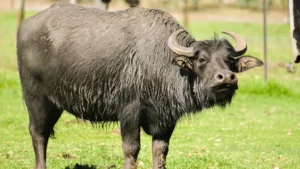
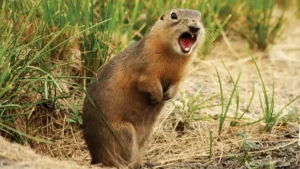
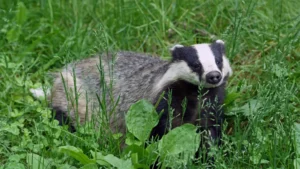


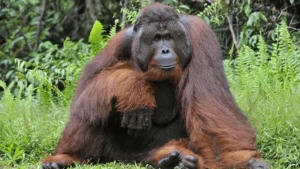




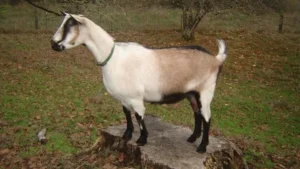

Leave your comment